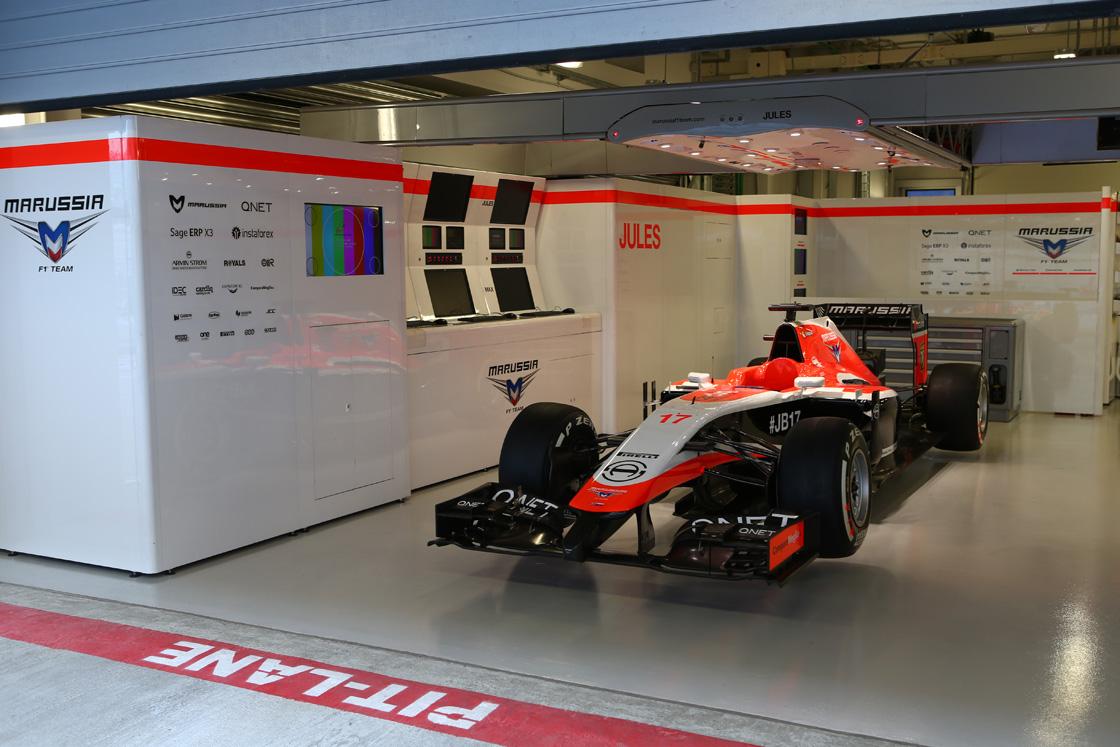
(Marussia F1 Team via Twitter)
The FIA Accident Panel set up to investigation the Marussia F1 Team's Jules Bianchi' crash on lap 43 of the Japanese Grand Prix at the Suzuka race circuit on October 5 have made their findings known at a meting of the FIA World Motorsport Council meeting in Doha on Wednesday. The ten man panel found that:
- The semi dry racing line at T 7 was abruptly narrowed by water draining onto the track and flowing downhill along it. Both Sutil and Bianchi one lap later, lost control at this point in T 7.
- Sutil's car was in the process of being recovered by mobile crane when Bianchi approached Sectors 7 and 8, which include the part of T 7 where the recovery was taking place. Sectors 7 and 8 were subject to double yellow flags.
- Bianchi did not slow sufficiently to avoid losing control at the same point on the rack as Sutil.
- If drivers adhere to the requirements of double yellow flags, as set out by Appendix H, Art 2.4.5.1.b, then neither competitors nor officials should be put in immediate or physical danger.
- The actions taken following Sutil's accident were consistent with the regulations, and their interpretation following 384 incidents in the proceeding 8 years. Without the benefit of hindsight, there is no apparent reason why the Safety Car should have been deployed either before or after Sutil's accident.
- Bianchi over-controlled the over-steering car, such that he left the track earlier than Sutil and headed towards a point 'up-stream' along the barrier. Unfortunately, the mobile crane was in front of this part of the barrier, and he struck and under-ran the rear of it at high speed.
- During the 2 seconds Bianchi's car was leaving the track and traversing the run-off area, he applied both throttle and brake together, using both feet. The FailSafe algorithm is designed to override the throttle and cut the engine, but was inhibited by the Torque Coordinator, which controls the rear Brake by Wire system. Bianchi's Marussia has a unique design of BBW, which proved to be incompatible with the FailSafe settings.
- The fact that the FailSafe did not disqualify the engine torque requested by the driver may have affected the impact velocity; it has not been possible to quantify this. However it maybe that Bianchi was distracted by what was happening and the fact that his front wheels had locked, and been unable to steer the car such that it missed the crane.
- Bianchi's helmet struck the sloping underside of the crane. The magnitude of the blow and the glancing nature of it caused massive head deceleration and angular acceleration, leading to his severe injuries.
- All rescue and medical procedures were followed and their expediency are considered to have contributed significantly to the saving of Jules Bianchi's life.
- It is not feasible to mitigate the injuries Bianchi suffered by either enclosing the driver's cockpit, or fitting skirts to the crane. Neither approach is practical due to very large forces involved in the accident between a 700kg car striking a 6500kg crane at speed of 126kph. There is simply insufficient impact structure on an F1 car to absorb the energy of such and impact without destroying either the driver's survival cell, or generating non-survivable decelerations.
Recommendations
- Introducing mandatory speed limits for a double yellow flag zone (Virtual Safety Car)
- A review of all safety critical software in order to check its integrity.
- Introducing drainage off access roads.
- 4 hour rule - to ensure that the start time of a race is not four hours prior to sunset or dusk with the exception of night races.
- A new Super Licence test for drivers hoping to enter the sport as a way of familiarizing themselves with the procedures relating to the running and safety of Formula One events,
- It was found that Formula One tyre supplier Pirelli were in no way responsible for the the accident however it has been suggested that Pirelli run an adequate wet weather tyre test between each season.
- Consideration will be given to the risk of F1 and whether significant holes in the defenses,
© Ben Johnston 2014

No comments:
Post a Comment